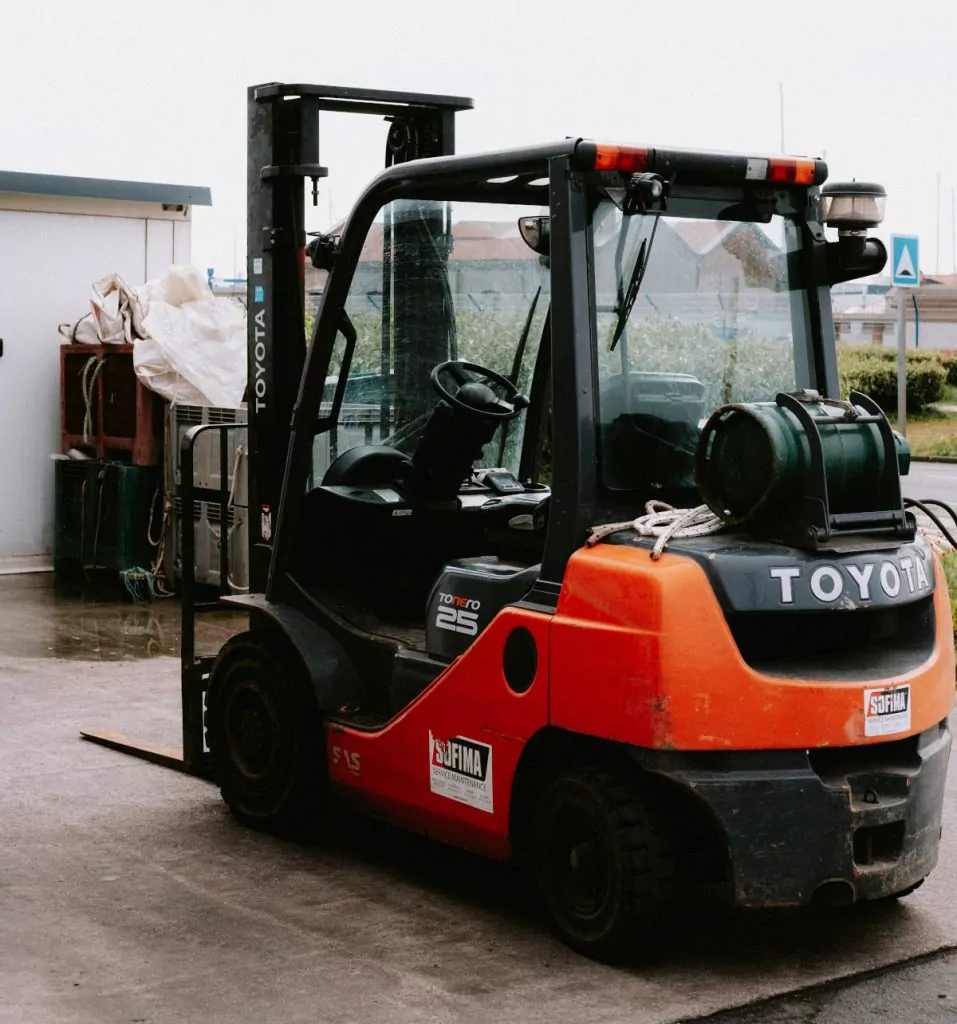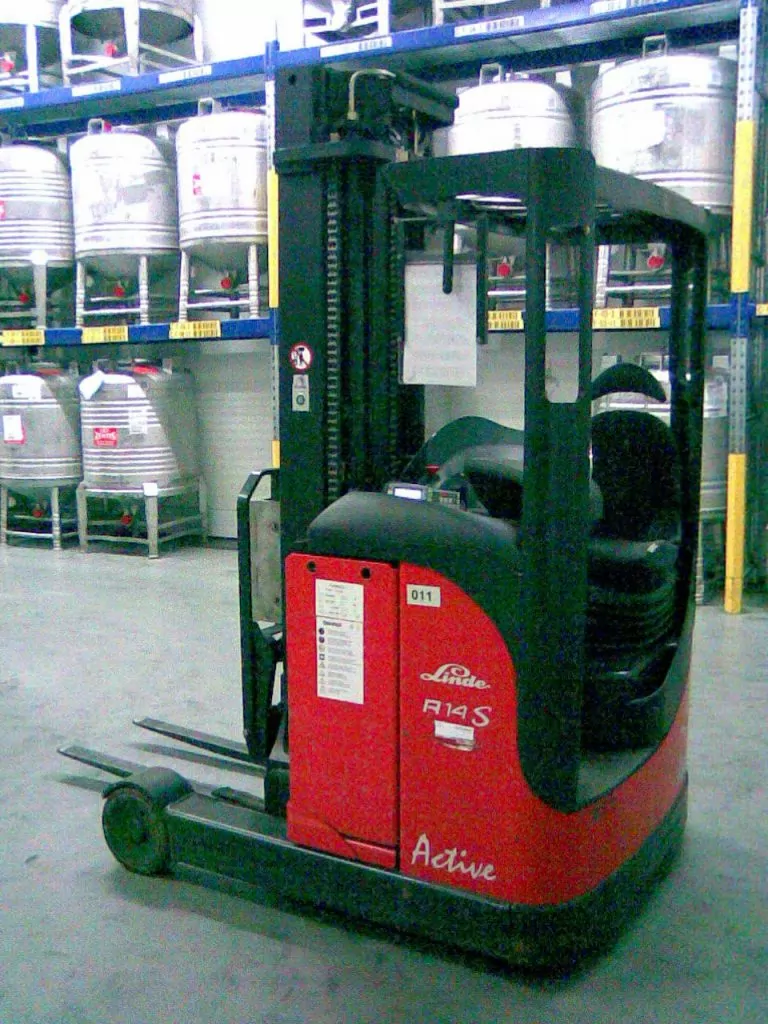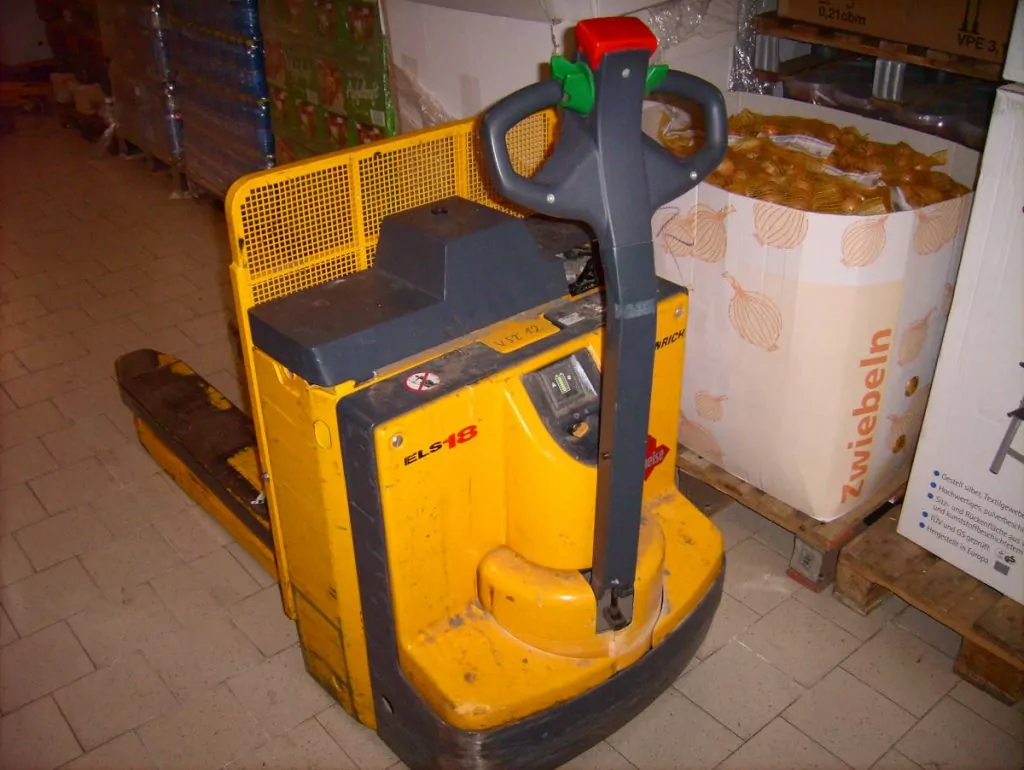Industrial trucks, also known as ground conveyors or floor conveyors, are vehicles used to transport inventories and materials within a company – horizontally and at ground level. (Vertically) transporting equipment that is suspended from the ceiling or runs on rails, for example, are classified as non-floor conveyors.
In production facilities, warehouses and distribution centers, industrial trucks are usually used for internal transport. These differ in terms of their functions, the purpose for which they are used and the way they are operated; nevertheless, they can be divided into trackless, track-bound and track-guided industrial trucks. Official typifications or categories come from the VDI on the one hand, and the German Social Accident Insurance (DGVU) on the other.
Classification according to VDI
According to VDI Guideline 3586 (German version), the Association of German Engineers divides industrial trucks into seven groups.
- Manually operated equipment
- Petrol and propellant gas powered equipment
- Diesel trucks for outdoor use
- Electric walk-behind equipment
- Electric stand-on equipment
- Electric drive-on equipment
- Picking devices
Each group is assigned a corresponding abbreviated designator. These abbreviations are used to create or decode in type sheets for industrial trucks in accordance with VDI Guideline 2198 and other European standards. The aforementioned abbreviation indicates the drive, the type of operation and the design, as well as whether the industrial truck is a driverless truck. In addition, according to the DIN standard DIN 15140, forklifts with driver’s seat are also classified as follows:
- Front forklift truck
- Reach truck
- Four-way forklift
- Transverse forklift truck
Classification according to DGVU
According to the relevant regulations of the German Social Accident Insurance (“Deutsche Gesetzliche Unfallversicherung”, DGUV), in particular the DGUV regulation 68 (German link), industrial trucks are characterized by the fact that they:
- run on wheels along the floor and are freely steerable
- are intended to carry, pull, or push cargo
- can be used in-house
According to the accident prevention regulation, industrial trucks with lifting equipment should also be characterized by other features:
- In addition to stacking and lifting goods, these industrial trucks should also be able to store inventories on shelves
- The industrial trucks need to be able to pick up and remove loads
The use of industrial trucks by employees in the company requires compliance with regulations of the employers’ liability insurance association. These include, above all, instruction, as well as an industrial truck certificate for industrial trucks with a motor.
Functions of industrial trucks
In essence, industrial trucks can be roughly differentiated based on their functions, regardless of other criteria. When transporting within the production area or between the warehouse and the production area or from loading ramps to storage bays and racks, various functions of industrial trucks are used. Although they move horizontally and at ground level, some can also perform vertical operations. According to the application area, generally three types can be distinguished:
- Lifting industrial trucks – This mainly includes various types of forklifts, which are primarily used to store and retrieve inventory on pallets and in corresponding pallet racking systems.
- Non-lifting material handling equipment – Manual or electric material handling equipment without the function of storing and retrieving pallets, boxes or containers into and out of a rack.
- Picking trucks – used to assemble orders using picking racks.
Which industrial trucks are used specifically already influences the planning of storage solutions. Rack height and size, as well as the aisle width are directly related to the selection of the respective industrial trucks.
Listing of common industrial trucks
Among the most well-known industrial trucks are forklifts and pallet trucks, but there are many more types and more precise designations. The following listing provides an overview of these:
Lifting mast forklift/counterbalance forklift

They have a counterweight attached to the rear, which allows them to carry a lot of weight. They are very flexible in use, as on the one hand they can store and retrieve inventories in pallet racks, and on the other hand they can move very quickly and maneuverably through the warehouse. Lift mast/counterbalance trucks are what is commonly meant by the term forklift truck.
Lift Mast Truck

Working in confined spaces and reaching great heights – that’s what reach trucks are designed for. They are used in particular for high-bay warehouses, in cold stores and logistics centers.
Pallet truck/pallet truck

Lift trucks and pallet trucks are cheaper, lighter and, most importantly, more maneuverable as compared to forklifts. Although they cannot store and retrieve pallet racking systems as they belong to non-lifting industrial trucks, they are still very versatile and widely used. There are electronic pallet trucks and hand pallet trucks. The operator walks along with the latter, while there are electric variants where the operator sits or stands on it while steering. There are also semi-electric pallet trucks and pallet trucks with integrated scales, which allow several operations to be combined. Colloquially referred to as “ant”, pallet trucks are low-lift pallet trucks; differentiating them, there are also high-lift pallet trucks, lift table pallet trucks and scissor lift pallet trucks.
Order Picking Truck
This kind of stacker is specially used in order picking to assemble orders. It is characterized by the operator having access to the controls while also having access to the load. Picking trucks are also called order pickers.
In addition, there are:
- Container stackers
- Telescopic forklifts
- Heavy-duty forklift trucks
- Off-road forklifts
- Side loaders
- Takeaway forklifts
- Driving stand-on forklifts
- High rack stackers
- Narrow aisle trucks
- Four-way stackers/ multi-way stackers
- Gantry trucks
- Driverless transport vehicles (AGV)
- Bed movers
- Reach stackers
- Tuggers/Tractors
- Roll containers
- Grid carts/roll cages
- Tugger trains
Summary
Industrial trucks are trackless, track-mounted, or track-guided vehicles used for the internal transportation of inventory. The transport takes place horizontally and at ground level. In addition, industrial trucks can include other functions; these include stacking, lifting or weighing loads. The operator walks alongside, sits or stands on the industrial truck; driverless industrial trucks are also available. Industrial trucks can be moved manually or be powered by internal combustion, electric or hybrid engines.
Industrial trucks are generally flexible and highly maneuverable. However, their numerous forms make it necessary to include them in the planning of intralogistics solutions right from the start, since they have just as much impact on warehouse size, maximum storage capacity and maximum warehouse movements as they do on aisle width and ultimately handling performance. Likewise, they require a certain level of maintenance and compliance with certain regulations when guiding and operating them.
Learn more about material flow controllers, continuous and discontinuous conveyors, and AGVs.
Also available in Deutsch (German)